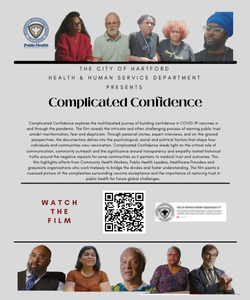New data released by 211 Child Care shows that 80% of Connecticut’s child care programs (licensed family child care homes and centers) are operating at their legally authorized capacity. This represents a 6% increase that has helped Connecticut families find needed child care.
Sherri Sutera, Senior Vice President of Child Care Services, United Way of Connecticut, believes “there are three main factors contributing to this meaningful increase:
- The demand and capacity for preschool age children increased by as many as 11,500 children. A significant legislative change in Connecticut impacted the number of available preschool slots. The new entry age for kindergarten effective July 2024 requires that children must turn five years old by September 1, as opposed to the previous cutoff of January 1. That meant 33% of the children in preschool classrooms that would have been eligible for kindergarten now needed to remain in preschool for an additional year. The survey results show that many center-based programs have reallocated their slots from school age to preschool to meet the demand for full day preschool care.
- The increased availability of legally authorized infant/toddler slots through additional funding and regulation changes. In the past year, the State of Connecticut provided funding to programs to offer subsidized infant/toddler slots. Funding was also made available through expansion grants to expand programs to serve more infants and toddlers.
In addition, effective October 2024, the Office of Early Childhood changed the licensing ratios and group sizes in child care centers allowing programs to serve more two year olds with the same number of staff. Infant/toddler care is traditionally the most expensive care to provide, mainly due to the number of staff required to comply with staff/child ratios. Giving programs the flexibility to enroll more toddlers without needing to hire additional staff allowed programs to offer more slots to this age group.
- A record number of families received a Care 4 Kids subsidy through the Office of Early Childhood. Care 4 Kids increased the number of children receiving the subsidy by more than 3,000 in the past year, reporting a record high of more than 23,000 subsidies! These families are now better able to afford child care, which contributes to increased enrollment, particularly for children ages 0-5 years old.”
“The progress we’re seeing reflects the impact of Governor Lamont’s targeted investments in early childhood,” says Beth Bye, Commissioner of the Connecticut Office of Early Childhood. “By increasing provider rates and expanding access for Early Start CT and Care 4 Kids, we are making measurable strides toward ensuring affordable, high-quality child care is within reach for more Connecticut families.”
“Today, United Way of Connecticut/211 Child Care is proud to release our 2025 point-in-time data through an interactive online map that allows our stakeholders to see a snapshot of estimated actual child care capacity, enrollment and open slots in their local communities and allows our legislators a new lens with which to view and respond to proposed child care legislation,” shares Lisa Tepper Bates, President & CEO, United Way of Connecticut.
The point-in-time data shows that despite the significant increase in the availability of child care programs over the past year, there are still more than 30,000 authorized child care slots that are currently unavailable. 211 Child Care’s survey data show that staffing issues continue to plague child care providers and the cost of child care is still an obstacle for Connecticut families.
Coleen Murphy, the Owner/Director of Fairy Tales Child Care and Development Center in Meriden shares, “I’m definitely having a hard time finding qualified staff that we can afford to pay.”
In addition to staffing, child care providers face a significant challenge because many parents can barely afford what they pay now. The 2024 ALICE Report about Connecticut households who are Asset Limited, Income Constrained, and Employed tells us that 40% of Connecticut parents still struggle to afford child care and many are not eligible to receive the Care 4 Kids subsidy. In fact, the report shows that an ALICE family with two parents, a baby and a toddler must pay one quarter or more of their monthly income on child care alone (nearly two times as much as the housing costs for these families).
Kelsey Reynolds, a new mom in Newington shares, “My husband and I just moved to Connecticut with our new baby. We are trying to find child care for our four month old son Finley, and can’t believe how expensive it is! I talked to 211 Child Care and they gave me places to call and reviewed the subsidy program with me. The cheapest program was $325 a week! The subsidy program says we make too much money to qualify. My husband and I both staggered our parental leaves to get us to the summer when I am off from my job as a Board-Certified Behavior Analyst in the school system. I need to find care that I can trust so I can go back to work in August.”
United Way of Connecticut/211 Child Care collected data for this report through surveys of child care providers and also used data provided by the Office of Early Childhood further to routine licensing inspection visits. Data extrapolation methodology was developed in consultation with DataHaven. Click here or the image below to explore the new interactive online map. Please note: the map data currently represents an estimated snapshot in time and will not reflect ongoing fluctuations in capacity and enrollment.
Photo by Pixabay: https://www.pexels.com/photo/person-coloring-art-with-crayons-159579/





